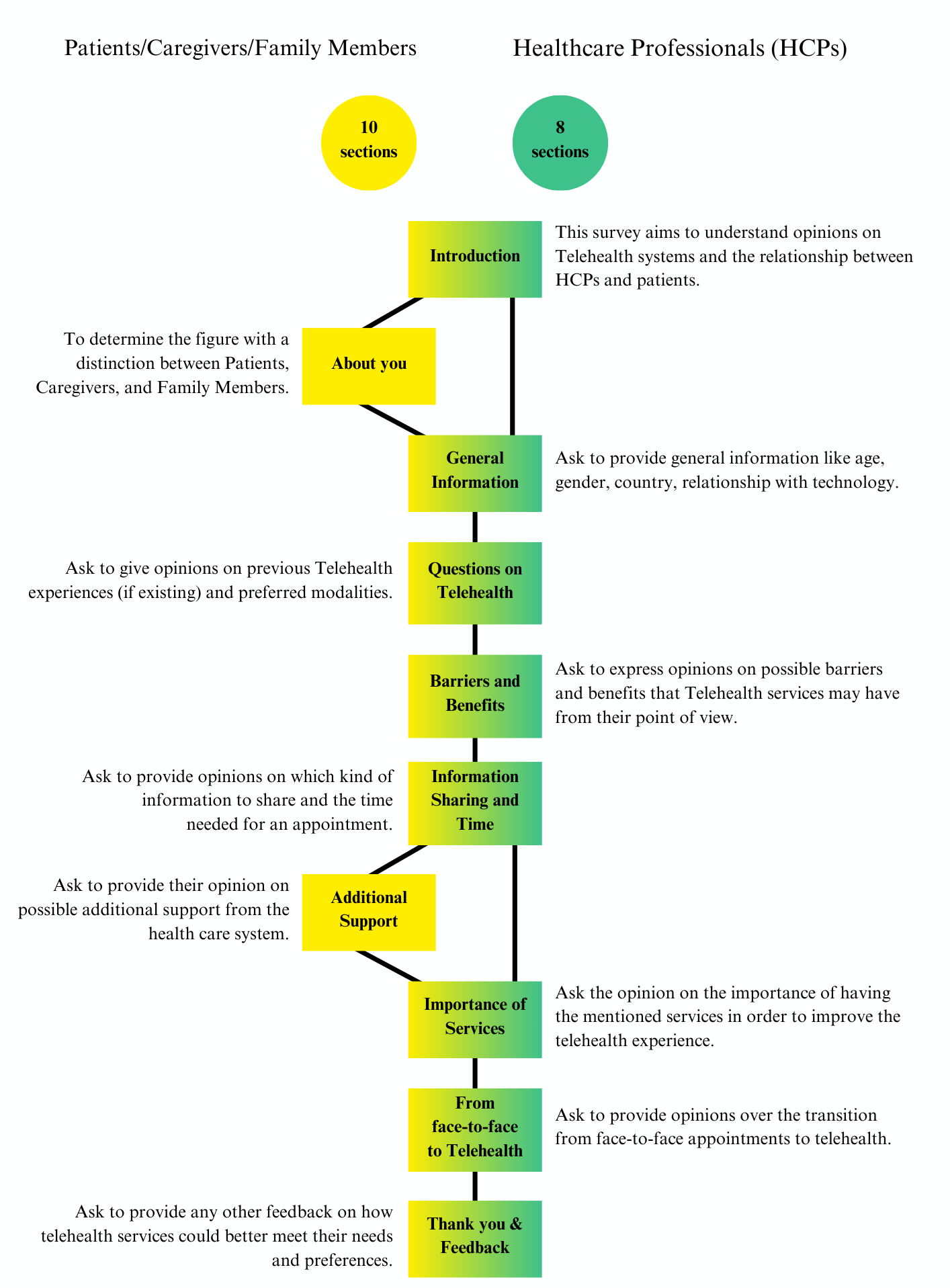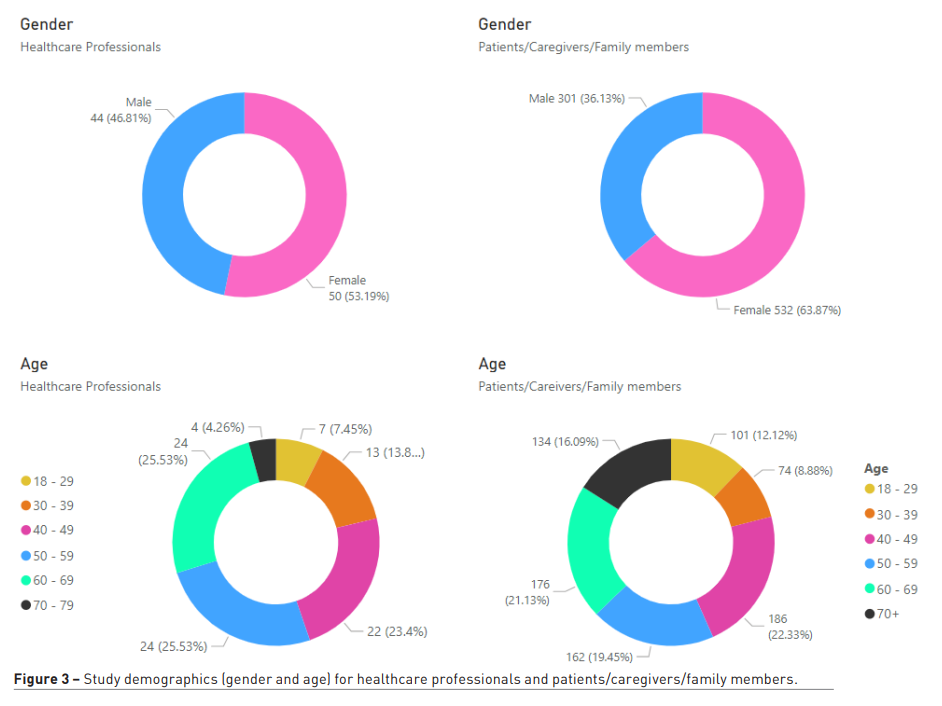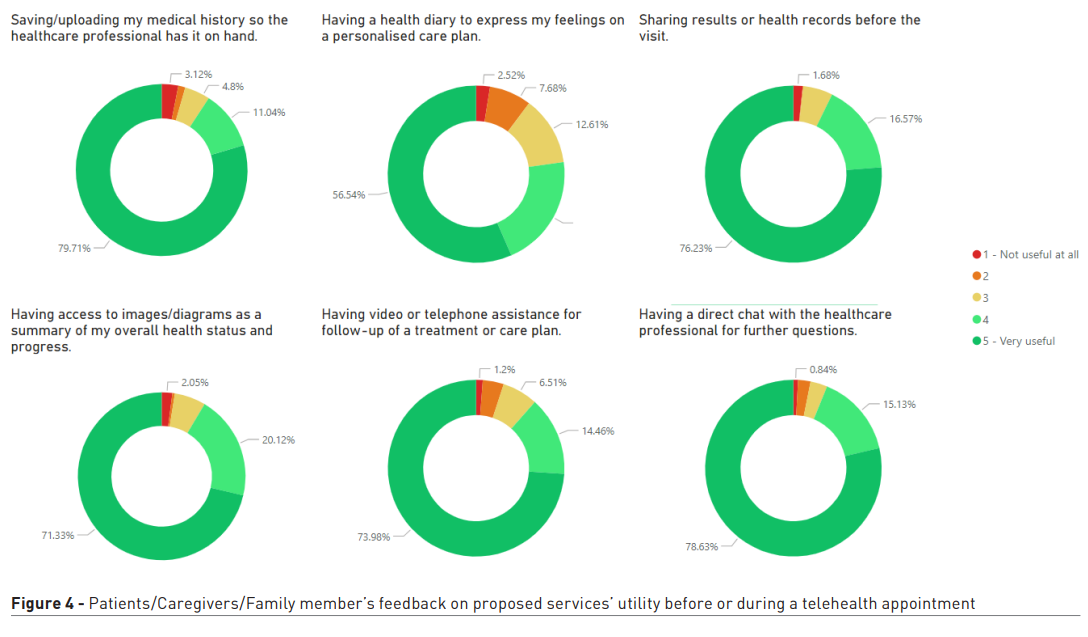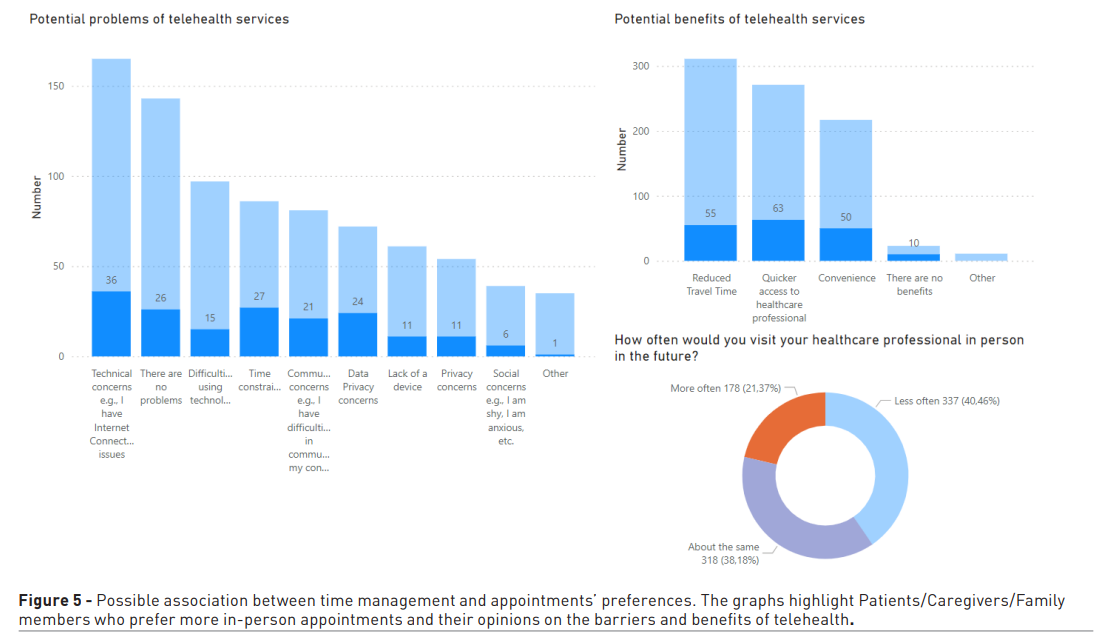HealthManagement, Volume 24 - Issue 4, 2024
The Lovexair Foundation explores how to maximise the adoption of digital health technologies, particularly telehealth, to enhance patient care by addressing both benefits and challenges. The study emphasises the need for human-centric solutions that improve communication, trust, and accessibility for patients and healthcare professionals.
Key Points
- Digital health technologies, especially telehealth, are transforming healthcare by improving patient engagement, self-monitoring, and treatment adherence.
- The Lovexair surveys captured the perspectives of patients, caregivers, and healthcare professionals on telehealth services, emphasising the importance of human-centricity, accessibility, satisfaction, and communication preferences.
- While telehealth offers advantages like convenience and better access to healthcare, significant barriers remain, such as technological challenges and the preference for face-to-face consultations in specific contexts.
- There are disparities in telehealth adoption based on age, language, and country, with older individuals and certain countries facing increased technological difficulties.
In today's technology-driven world, healthcare is undergoing a significant transformation. Lovexair Foundation, an NGO based in Spain, is dedicated to improving the experiences of patients, caregivers, and healthcare professionals through innovative virtual care. They conducted a study to evaluate the real-life impact of online medical consultations. This article explores the benefits of digital health models and their potential to improve patient well-being. It investigates whether the rapid growth of digital health technologies can lead to advancements in self-monitoring, patient engagement, and treatment adherence.
The main objective of this study is to assess the influence of digital health, with a specific focus on telehealth services. A comprehensive methodology was used to achieve this, including developing, distributing, and analysing two online surveys for patients, caregivers, family members, and healthcare professionals. The results emphasise the crucial role of communication and effective information sharing, underlining the importance of humanising technology and building trust in digital health solutions.
Exploring Digital Health Solutions Through Patient and Professional Insights
In recent decades, three major changes have significantly impacted our lives: the increase in human life expectancy, the rapid growth of digitalisation, and the merging of these two forces. This convergence has led to significant opportunities and complex challenges, particularly in the healthcare industry. Digital health solutions have become crucial tools for empowering patients to manage their health. These solutions enable patients to monitor their health and improve their understanding of their medical conditions. Additionally, digital tools complement traditional healthcare practices, offering healthcare professionals an alternative method for monitoring patients and ensuring timely interventions (Abernethy 2022).
This study aims to enhance the HappyAir Ecosystem (Zanrosso 2024) by exploring the perspectives of both patients and healthcare professionals on digital health technologies. The objective is to evaluate these factors by collecting data through an extensive two-month survey campaign. The study examines the benefits, challenges, and preferences associated with telehealth services to provide valuable information for developing technologically advanced telehealth systems prioritising human needs. The OPtimising HEalth LIterAcy (Ophelia) approach was used for the evaluation (Zanrosso 2024).
Innovation and Digital Transformation for Patient-Centric Care
The importance of innovation in the healthcare industry has grown significantly, mainly due to COVID-19, including fragmentation, limited resources, and deficiencies in data management (Toni 2023). The increasing utilisation of digital technologies in healthcare signifies a notable transition towards a patient-centric methodology, highlighting the need for empowerment to support improved individualised care. By adopting digital literacy skills in health care, individuals are motivated to participate actively in the management of their health by prioritising their active involvement, contributing information, and working together with HCPs (Toni 2023). This approach, in turn, results in enhanced health (Van Boven, 2023).
Telehealth technologies, which are digital interventions, provide flexible solutions beyond particular practices and healthcare organisations. These interventions are available in several formats, such as synchronous programmes (communication through video conferencing or telephone calls) and asynchronous solutions (emails, messaging, or notifications) (Watson 2022; WHO 2024). Multiple studies have provided evidence of the advantages of digital health applications, such as decreased hospitalisation rates, enhanced symptom management, and overall enhancements in quality of life (Quach 2023; Bao 2022; López Seguí 2018; Jiménez-Reguera 2020). Nevertheless, substantial obstacles still exist that hinder the implementation of digital health technologies, including economic, organisational, behavioural, and technological aspects, which may vary in different contexts (Cannavacciuolo, 2023).
Survey of Patient, Caregiver, and Healthcare Professional Requirements
To evaluate the requirements of patients/caregivers/family members and HCPs regarding telehealth services, Lovexair used a quantitative methodology to collect data from a substantial number of participants. The main goal was to create surveys that gathered opinions and experiences with digital health services, with a specific focus on elements like accessibility and levels of satisfaction.
The surveys were expected to take 5 to 10 minutes to complete to make the process more efficient for all participants. The questionnaire development was organised into four distinct phases:
- Literature Review on Barriers and Benefits of Digital Health Solutions.
- Questionnaire development.
- Endorsements and sharing strategy.
- Questionnaire launch and analysis.
The questionnaire is customised for different types of users (Figure 1). Patients, caregivers, and family members have additional sections for profiling information and requesting further support. Both groups need to provide basic demographic data and assess their level of technological proficiency.
- The "Questions on Telehealth" section is based on the user's previous experiences with telehealth services, considering the varied stages of telehealth advancement in different countries. Participants in this section need to specify their preferred methods of communication and the equipment they use for connectivity. They must also indicate whether their telehealth sessions were conducted within a public or private health system and specify the categories of telehealth appointments (regular examinations, medication prescriptions, urgent situations, etc.).
- In the "Barriers and Benefits" section, participants need to list potential obstacles (technological, privacy, and social barriers, perceived levels of stress) and advantages (such as decreased travel time and convenience) of telehealth services.
- "Access to Information" emphasises the importance of having precise information before or during a telehealth consultation, including reports from past visits, prescription details, and clinical test results.
- In the "Importance of Services" section, participants must assess different services, including the significance of readily accessible medical history and the feasibility of maintaining a health diary.
- "From Face-to-Face Appointments to Telehealth" encourages participants to consider the specific elements of in-person healthcare they find lacking in telehealth appointments.


The partnerships Lovexair formed with several entities have been crucial for enhancing the study process and expanding the pool of participants. By collaborating with patient advocacy groups and professional associations, researchers were able to involve a broader and more diverse group of individuals. This collaborative approach not only improves the inclusivity and representativeness of the sample, but also enhances the legitimacy and relevance of the research findings. To reach a varied readership, social media sites were prioritised for posting regular updates during the survey campaign to maintain consistent engagement. Additionally, Lovexair developed a landing page in Spanish, English, Italian, and Portuguese to serve as a central hub for participants, providing essential information about the research topic.
The data analysis of the questionnaires was performed, and the responses were classified according to the language used to complete the questionnaires. This was done to cater to the participants' varied linguistic and contextual requirements, enabling the detection of language-specific differences. In addition, the replies were categorised based on the type of respondent, distinguishing between patients/caregivers/family members and HCPs to comprehend the viewpoints and requirements of each faction. Starting from this mindset, the analysis concentrated on three crucial domains:
- Obstacles in Telehealth. Identifying prevalent obstacles encountered by patients and HCPs in the adoption and utilisation of Telehealth services. This encompassed technological challenges, concerns over accessibility, and stress levels associated with virtual consultations.
- Advantages of Telehealth. Emphasising the advantages users acknowledge, such as the convenience, enhanced accessibility to healthcare, and the simplicity of exchanging health data with healthcare experts.
- Preferences of Services. Identifying the services that patients/caregivers/family members and HCPs would want to have either before or during their Telehealth appointments.
Survey Insights: Language, Gender, and Age Disparities
Between February and April 2024, 335 questionnaire responses were collected. 241 responses came from patients, caregivers, or family members, while 94 were from healthcare professionals. The analysis of the data revealed significant differences based on preferred language: significantly more respondents selected Spanish compared to those who chose Portuguese, Italian, or English, indicating greater engagement among Spanish speakers (Figure 2). This is likely due to Lovexair Foundation's base in Spain and its extensive network in Latin America.


Although there is an equal gender distribution among HCPs, there is a clear gender imbalance among patients, caregivers, and family members (Figure 3). Additionally, the examination of the age distribution indicates a need for more representation of individuals between the ages of 18 and 29. Consequently, the poll primarily captures the viewpoints of older age groups, who may have different levels of experience with telehealth consultations.

Virtual Care Readiness: Barriers, Preferences and Perceptions
While analysing the questionnaire data, researchers explored different connections between important variables as follows.
Countries and Level of Technology. Data analysis showed notable disparities in technological expertise among various countries. Participants from specific countries, including Colombia, Paraguay, Spain, and Italy, had elevated levels of inadequate or non-existent familiarity with technology. The data indicated that those aged 40 and above were more likely to experience technological difficulties, implying a connection between age and difficulty with technology.
Assistance in Telehealth consultations and Perceived Level of Stress. Examining stress levels during Telehealth consultations indicated that although HCPs’ reactions remained limited, their stress levels had no uniform trend. Nevertheless, when considering the patients' viewpoint, it is apparent that a low degree of stress is encountered during telehealth consultations.
Assistance in Telehealth consultations and Device Preferences. Data demonstrates a clear inclination towards smartphones as the preferred choice for Telehealth consultations, surpassing laptops, tablets, and other devices. This choice highlights the attractiveness of smartphones due to their user-friendly nature and convenient accessibility.

Preferences of Services in Telehealth. Figure 4 provides a comprehensive summary of service preferences as perceived by both patients and HCPs. Patients evaluated most of the suggested services as either “Useful” or “Very Useful”, except for a health diary designed to monitor personal emotions. Although the literature supports using health diaries in healthcare settings, concerns regarding the time and effort demanded from patients and HCPs may have influenced the negative response received (Hilário 2023). Conversely, HCPs exhibited more significant doubt, specifically regarding the efficacy of health diaries and the value of follow-up conversations through video or chat.
Telehealth’s Obstacles and Benefits and willingness to have more in-person consultations. The examination of barriers and advantages revealed in the Telehealth survey (Figure 5) reveals a significant
pattern: individuals who encounter challenges with Telehealth are more likely to favour face-to-face consultations in the future. Interestingly, individuals who favoured more face-to-face sessions also acknowledged the advantages of faster access to healthcare professionals and less travel time. This implies a subtle viewpoint in which the challenges linked to telehealth can be more significant than the perceived advantages for specific consumers: technical obstacles are especially noticeable in certain areas, including Latin America. Nevertheless, an equivalent percentage of users indicated they encountered no difficulties using telehealth services, which complicates examining the correlation between advantages, barriers, and the inclination to participate in telehealth appointments. This viewpoint is consistent with existing research on the adoption of new technology, which frequently emphasises the equilibrium between perceived advantages and difficulties (Wakefield 2015).

Conclusion
This article presents a study exploring the value that hybrid care models and digital health technologies can offer patients with respiratory conditions, with the primary aim of enhancing the HappyAir Ecosystem established by Lovexair. Two surveys were conducted to achieve the study’s objectives and utilised the Ophelia methodology (Zanrosso 2024) to assess and analyse the results. The surveys aimed to uncover the perceived benefits and challenges associated with telehealth, as well as participants’ preferences for digital health services.
The diverse experiences of participants, which include varying levels of technological proficiency and cultural backgrounds, reveal a clear preference for virtual health solutions that are both technologically advanced and human-centric. These solutions are supported by a business intelligence platform that facilitates better real-time health status monitoring for HCPs. Both patients and HCPs emphasised the importance of maintaining human relationships and ensuring effective communication in the digital realm. The study underscores the significance of relevant digital information sharing in enhancing patient engagement in virtual environments.
Conflict of Interest
None
References:
Abernethy A, Adams L, Barrett M et al. (2022) The Promise of Digital Health: Then, Now, and the Future. NAM Perspectives. 22(6):202206e
Bao Y, Wang C, Xu H et al. (2022) Effects of an mHealth Intervention for Pulmonary Tuberculosis Self-Management Based on the Integrated Theory of Health Behavior Change: Randomized Controlled Trial. JMIR Public Health and Surveillance. 8(7):e34277
Cannavacciuolo L, Capaldo G, Ponsiglione C (2023) Digital innovation and organizational changes in the healthcare sector: Multiple case studies of telemedicine project implementation. Technovation. 120(2):102550
Hilário A P, Augusto F R (2023) The use of diaries for understanding the experience of health and illness. Sociology Compass. 17(9):e13103
Jiménez-Reguera B, Maroto López E, Fitch S et al. (2020) Development and Preliminary Evaluation of the Effects of an mHealthWeb-Based Platform (HappyAir) on Adherence to a Maintenance Program After Pulmonary Rehabilitation in Patients With Chronic Obstructive Pulmonary Disease: Randomized Controlled Trial. JMIR mHealth and uHealth. 8(7):e18465
López Seguí F, Pratdepàdua Bufill C, Rius Soler A et al. (2018) Prescription and Integration of Accredited Mobile Apps in Catalan Health and Social Care: Protocol for the AppSalut Site Design. JMIR Research Protocols. 7(12):e11414
Quach S, Michaelchuk W, Benoit A et al. (2023) Mobile health applications for self-management in chronic lung disease: a systematic review. Network Modeling Analysis in Health Informatics and Bioinformatics. 12(1):25
Toni M, Mattia G and Pratesi C A (2024) What’s next in the healthcare system? The contribution of digital innovation in achieving patient-centricity. Futures. 156(2):103304
van Boven J F M, Drummond D, Chan A H Y et al. (2023) ERS “CONNECT” Clinical Research Collaboration – moving multiple digital innovations towards connected respiratory care: addressing the over-arching challenges of whole systems implementation. European Respiratory Journal. 62(5):2301680
Wakefield R L (2015) The Acceptance and Use of Innovative Technology: Do Positive and Negative Feelings Matter? ACM SIGMIS Database: the DATABASE for Advances in Information Systems. 46(4):48-67
Watson A, Wilkinson T M A (2022) Digital healthcare in COPD management: a narrative review on the advantages, pitfalls, and need for further research. Therapeutic Advances in Respiratory Disease. 16:175346662210754
World Health Organization (2024) Telehealth quality of care tool. WHO/EURO:2024-9475-49247-73556
Zanrosso S (2024) Humanized Digital Care: improving HappyAir Ecosystem for respiratory conditions’ monitoring. Master’s Thesis, University of Trento, Italy





